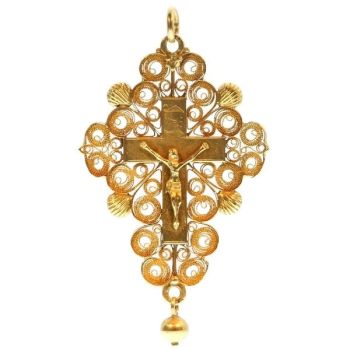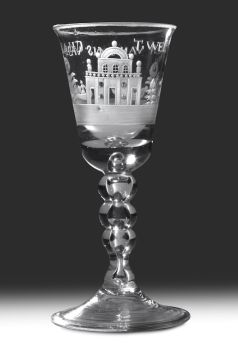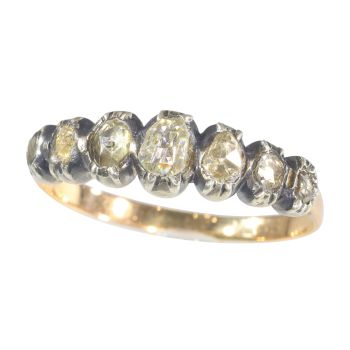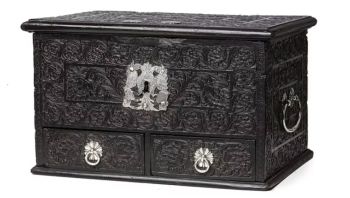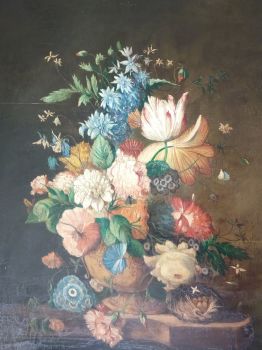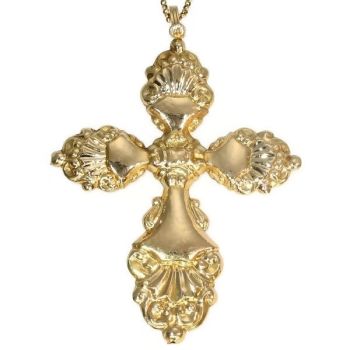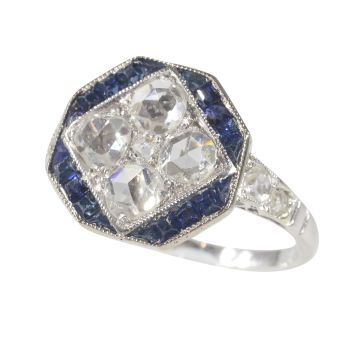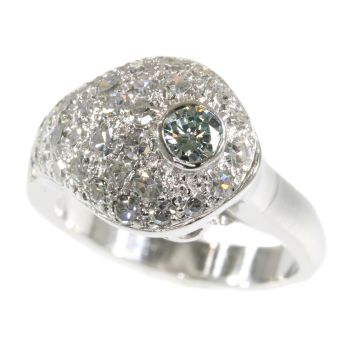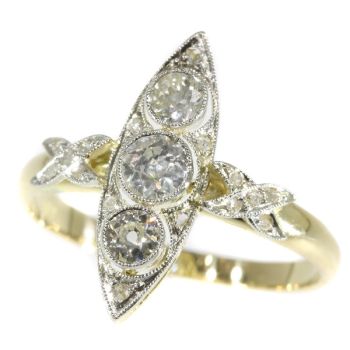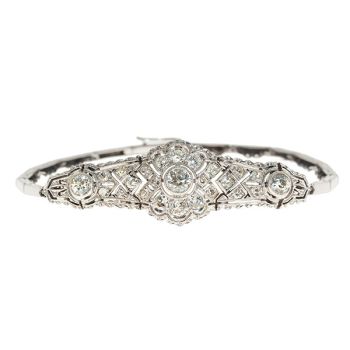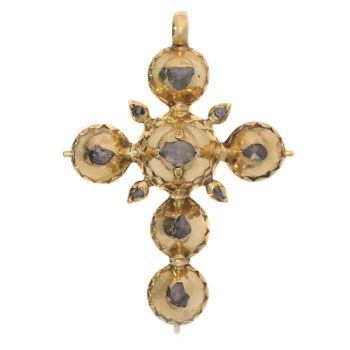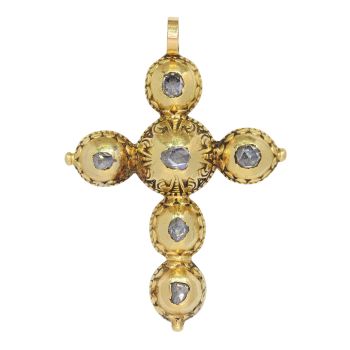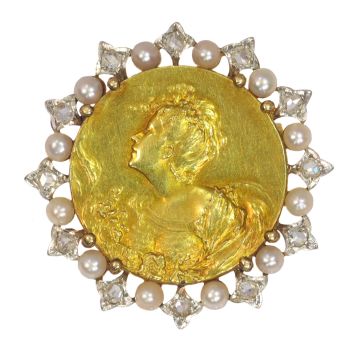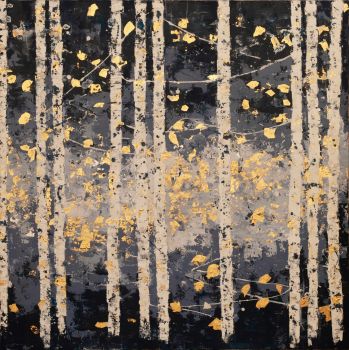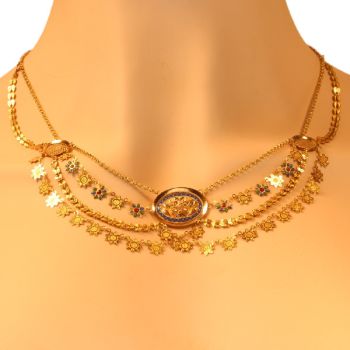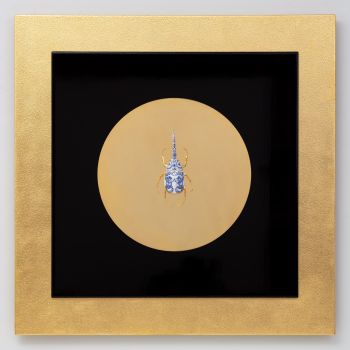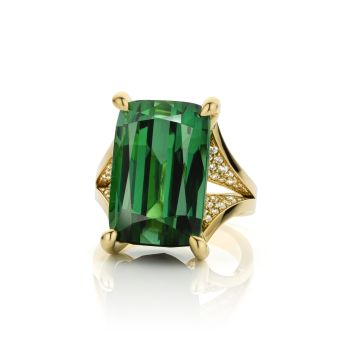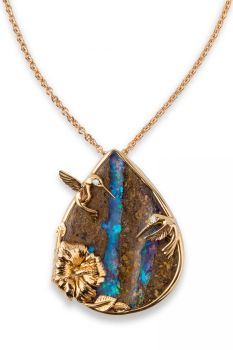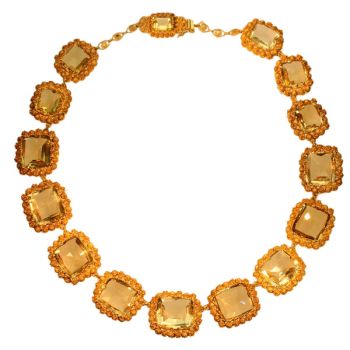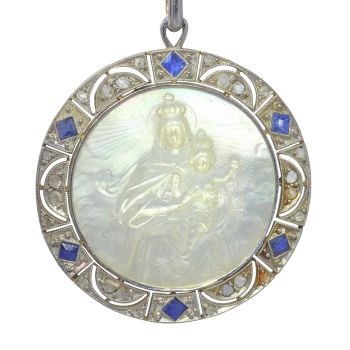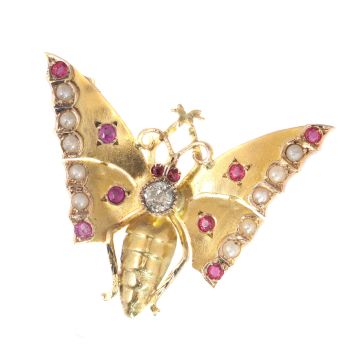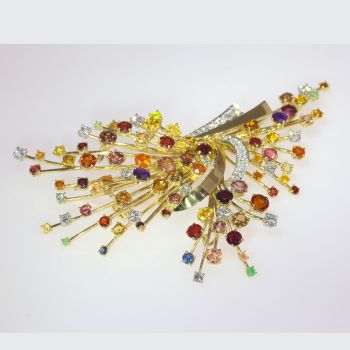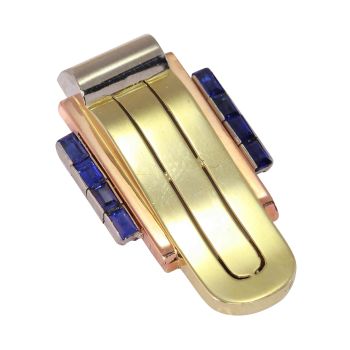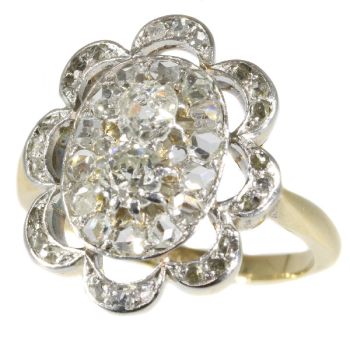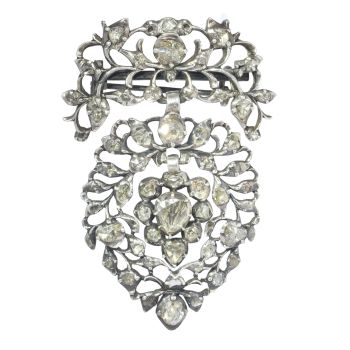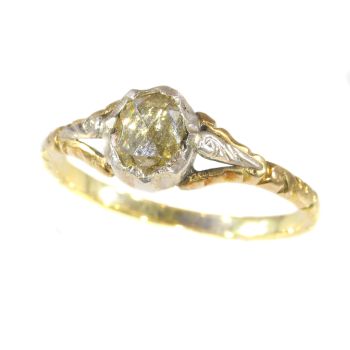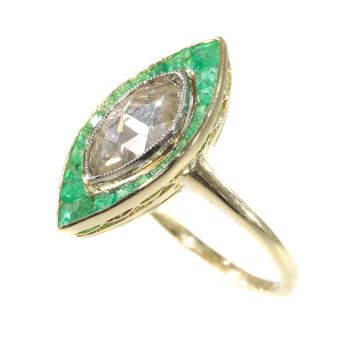Antique 18K Gold Baroque Wedding Band, Circa 1700 – A Timeless Symbol of Love 1700
Onbekende Kunstenaar
Goud
€ 8.200
Adin Fine Antique Jewellery
- Over kunstwerk
Imagine wearing an antique wedding band from circa 1700, a rare piece crafted in 18K yellow gold, with alternating lozenge shapes and stylised floral motifs set upon delicate filigree wirework. This beautiful ring, with its Baroque charm, is not just apiece of jewellery; it’s a tangible connection to history, symbolising the enduring nature of love. To wear such a ring as a symbol of your marriage is to carry a piece of timeless elegance, a link to centuries past, as you begin your own journeytogether.
Antique jewelry object group
ring, wedding band
Condition
very good condition
more info on our condition scale
Country of origin
Netherlands
Style
Baroque - Baroque is an artistic style that dominated Europe from the late 16th century to the early 18th century. Often described as "the leading style in European art between the Mannerist and Rococo periods, characterised by dynamic movement,heightened emotion, and bold expression."
Find more info on Baroque
more info on styles
Style specifics
Baroque is a style in art and decoration that developed shortly before 1600 and remained current in Europe until the emergence of the Rococo style c.1730. It was started in Italy, and spread to Germany, Austria, the Low Countries, and Spain andPortugal, with only a somewhat severely classical version being popular in France under Louis XIV. The style was a development of the Renaissance style and is characterized by lively, curved, and exuberant forms, by vigorous movement, and by richornament, based on classical sources, being symmetrical as distinguished from the asymmetry of the following Rococo style.
Period
ca. 1700
Events & facts of this era, poetry of this era, fashion of this era.
Material 18K
warm yellow gold (touchstone tested)
more info on precious metals
Technique
This jewel features a filigree decoration, which is in fact thin gold wire twisted into refined motifs, in this case elegant little balls. You can also notice the use of granulation on this piece. Granulation is a technique where the goldsmith uses very small balls (granules) of metal, which are not soldered to the piece but welded. Both techniques demand very high skills and precision from the maker.
Hallmarks
On the outside of the ring is a hallmark from the Kingdom of the Netherlands, a flowered letter V, used for foreign and small domestic works between 1814 and 1831. On the inside, there are older hallmarks that require further research, but one appears to resemble a 'U' shape, with a standing lozenge between the open arms of the 'U', possibly encircled by a halo-like feature (possibly a year letter?). The distinct character of these marks suggests that the ring could date back to around 1700.
more info on hallmarks
Dimensions
band width 0,75 cm (0,30 inch)
see picture with a ruler in millimeters and inches
Weight
4,30 gram (2,76 dwt)
Ring size Continental EU: 62 & 19¾ , Size USA: 10 , Size UK: T½
Resizing
Resizing is possible but because of the age of the ring we prefer to leave it untouched. Return policy on this ring is not valid anymore once this work has been done.
more info on ring sizes
Adin Reference Nº
24121-0313
Copyright photography
Adin, fine antique jewellery
Additional information
our latest acquisitions
jewelry glossary
wall of fame
visit us in Antwerp
subscribe to our mailinglist
- Over kunstenaar
Het kan voorkomen dat een kunstenaar of maker onbekend is.
Voor sommige werken is het niet te bepalen door wie het gemaakt is of dat het is gemaakt door (een groep) ambachtslieden. Voorbeelden zijn beelden uit de Oudheid, meubels, spiegels of handtekeningen die vaak niet duidelijk of leesbaar zijn. Maar ook sommige werken zijn helemaal niet gesigneerd.
Ook kunt u de volgende beschrijving vinden:
•"Toegeschreven aan …." waarschijnlijk een werk van de kunstenaar maar niet zeker of gedeeltelijk
•“Atelier van ….” of werkplaats van” een werk uitgevoerd in het atelier of atelier van de kunstenaar, eventueel onder zijn toezicht
•“Cirkel van ….” een werk uit de periode van de kunstenaar die zijn invloed laat zien, nauw verbonden met de kunstenaar maar niet noodzakelijkerwijs zijn leerling
•“Stijl van ….” of “Volger van ….” een werk uitgevoerd in de stijl van de kunstenaar, maar niet noodzakelijk door een leerling; kan eigentijds of bijna eigentijds zijn
•“Wijze van ….” een werk in de stijl van de kunstenaar maar van latere datum
•"Na …." een kopie (van welke datum dan ook) van een werk van de kunstenaar
•“Getekend…”, “Gedateerd….” of “Ingeschreven” dan is het werk gesigneerd/ gedateerd/ ingeschreven door de kunstenaar. De toevoeging van een vraagteken duidt op een element van twijfel
•"Met handtekening ...", "Met datum ...", "Met opschrift..." of “Draagt signatuur/datum/opschrift” dan is de handtekening/datum/opschrift toegevoegd door iemand anders dan de kunstenaar
Bent u geïnteresseerd om dit kunstwerk te kopen?
Artwork details
Related artworks
- 1 - 4 / 12
Onbekende Kunstenaar
Cristallo façon de Venise Drinkglas1600 - 1650
Prijs op aanvraagPeter Korf de Gidts - Antiquairs
Onbekende Kunstenaar
A Dutch colonial Indonesian betel box with gold mounts1750 - 1800
Prijs op aanvraagZebregs & Röell - Fine Art - Antiques
Johannes van Dreght
Antique Dutch still life flowers in vase1740 - 1800
Prijs op aanvraagGallerease Selected
Onbekende Kunstenaar
Een Gotische zuidelijke Nederlanden wandklok1580 - 1590
Prijs op aanvraagNico van den Assem restauratie
1 - 4 / 24- 1 - 4 / 24
Onbekende Kunstenaar
Retro ring in platina bezet met diamanten en een saffier1940 - 1950
Prijs op aanvraagLyppens Juweliers
Samuel Dejong
Anatomia Blue Heritage, Atlas Closed2017 - 2019
Prijs op aanvraagVilla del Arte Galleries
1 - 4 / 24- 1 - 4 / 12









